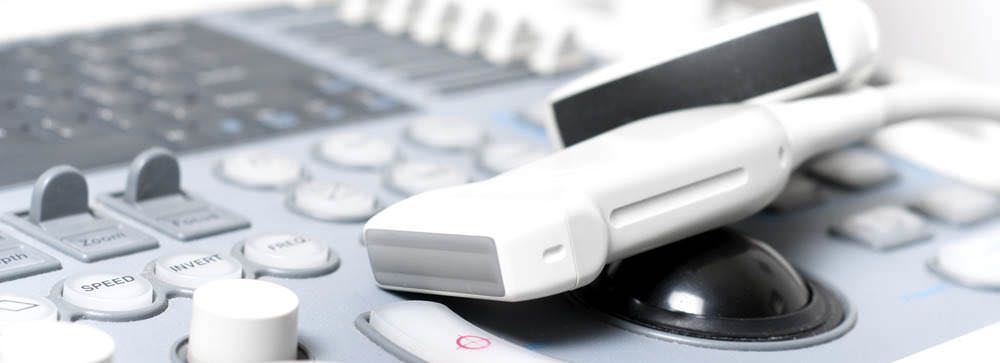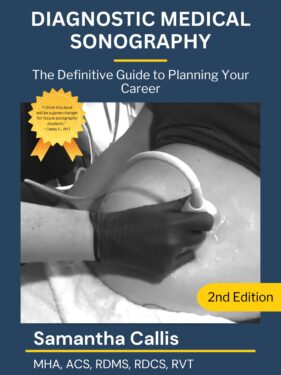Why Clinical Training Matters in Ultrasound Education
Clinical training is one of the most essential components of any high-quality Diagnostic Medical Sonography (DMS) program. While classroom instruction and lab simulations build the theoretical framework, it’s your hands-on clinical experience that prepares you to succeed as a professional sonographer.
Article Summary and Key Takeaways:
- Clinicals are the hands-on portion of your ultrasound program.
- In accredited programs, clinical rotations are required.
- During your clinical rotation, you will be evaluated on your professional competencies.
- Get first-hand advice on nailing your clinicals from sonographer Candace Sellers, RDMS
In most accredited ultrasound programs, clinical rotations are not optional. They are a structured and required part of your degree plan. These rotations typically take place in hospitals, outpatient centers, physician offices, or medical imaging labs. Depending on the program, you may complete multiple internships across different specialties and settings, gaining a broader and more practical understanding of the field.
Once your foundational coursework and lab hours are complete, you’ll begin applying your skills in real-world clinical environments. You’ll learn how to scan actual patients, operate diagnostic ultrasound equipment, and function as part of a healthcare team. Many bachelor’s-level programs require students to complete at least 960 clinical hours, which is roughly equivalent to six months of full-time, supervised training.
Whether you’re just starting out after high school or returning to school as an adult learner, this is where the learning becomes real.
What to Expect from Your Ultrasound Technician Clinical Rotations
During your clinical rotations, you will be evaluated on professional competencies that mirror the responsibilities of working sonographers. These competencies often include:
- Patient care and communication
- Operation and maintenance of ultrasound equipment
- Acquisition and interpretation of diagnostic images
- Workflow efficiency and interprofessional collaboration
- Medical documentation and scheduling procedures
Every clinical site will have its own protocols and culture. As a student, your adaptability will be just as important as your scanning technique. You will encounter differences in protocols, patient populations, and equipment, and each one is an opportunity to grow your clinical confidence.
This phase of your education also plays a key role in professional certification. Clinical experience is a required eligibility component for taking exams through the American Registry for Diagnostic Medical Sonography (ARDMS).
Just as important, it’s your chance to make connections. Many students find their first job leads through clinical rotations. Treat each site as a potential employer.
Make Wise Use of Your Clinical Time: Student Perspective From Candice Sellers, RDMS
A graduate of Gwinnett Tech’s Diagnostic Medical Sonography program, Candice Sellers, B.S., RDMS was awarded top clinical student honors in her class!
Below she shares with us why medical imaging clinical training is so important in your journey to become a sonographer. Take note of her suggestions on how to approach this aspect of your sonography training program.
What is Clinical Training for Sonographers?
Diagnostic Medical Sonography clinical training is one of the most important parts in a student sonographer’s journey. The clinical setting will provide students with the hands-on training and experience that is needed in order to learn how to scan in the ultrasound field.
Most ultrasound programs will have students rotate to multiple clinical sites that provide a variety of exams. During this part of the training there are a few things that students should keep in mind in order to make the most of their clinical time.
My Ultrasound Clinical Experience
The clinical experience can be very stressful at first. The nervousness and anticipation of what to expect during my rotations were at the forefront of my thoughts. However, once I began to get into the flow of the department everything changed. I made sure that I came prepared to learn every day.
There are many objectives that a student should master during their clinical rotations. The three key things that helped me to have an exceptional clinical experience were being proactive, having a team player mindset, and an eagerness to learn.
How To Make The Most of Your Sonography Clinical Experience
Be Proactive
Being proactive within the clinical setting as a Sonographer student is very important. As a student you should be able anticipate the needs of the department. When you arrive at the assigned clinical site, you should pay close attention to the workflow and the specific details that the Sonographers demonstrate to get the job done.
Every department and clinical site is different. You will see practices in one setting that you will not be able to implement in another.
Most ultrasound departments are extremely busy. The sonographers get overwhelmed at times with the stress and the demands of the workload. If the student has paid close attention to the needs of the clinical site they can take more of a proactive approach to helping out.
A good way to take initiative could be as simple as offering to write up patient histories, pulling previous imaging studies up for review, and setting up exam rooms for scheduled procedures.
Have a Team Player Mindset
Most of us will at some point have to work in a group or on a team with other individuals. Working with other team members requires sharing responsibilities in order to complete certain tasks. The student may walk into the department and feel as if they do not need to assist with any of the tasks within the department. This notion is definitely not within the best interest of the student.
When you show up to your assigned clinical site, you want to have the mindset of a team player. The clinical experience is an ongoing interview process. The student should always want to extend any assistance possible to help the sonographers with the responsibilities in the department.
Being a team player helps lighten the load for the sonographers. Demonstrating the team player mindset leaves a lasting impression on your preceptors. This could open up endless future job opportunities for the student.
Show an Eagerness to Learn
In addition to being proactive and having that team player mindset as a student one must have an eagerness to learn. During every single clinical rotation there is an opportunity to learn many skills. You must show up prepared to receive all information that your preceptor has to offer. When I worked in the hospital as a clinical preceptor for the sonographer students I always looked for the student’s willingness to learn. I expected that the student would be prepared to take notes and show interest in wanting to scan.
While in ultrasound school part of the student’s time is in the classroom setting learning the didactic lessons. The clinical portion is where the student must learn to master the hands-on application necessary to become a sonographer. So whenever possible, the student should always ask to scan during their ultrasound clinical rotation.
As mentioned previously, the ultrasound departments are generally busy and the preceptor will have to continue to manage the workflow of the department. The preceptor is there to help guide you during the clinical experience. However, the student must be prepared to take on an active role in their learning journey.
Looking Ahead
Learning to become a Diagnostic Medical Sonographer is very challenging. As a student you are overloaded with so much information in a short period of time. It’s important for the student to understand that developing ultrasound skills takes time. Therefore, the student must be self motivated as they navigate through this journey.
The clinical experience will be one of the most critical components. While in the clinical setting the sonographer student will learn the day-to-day expectations of the profession. Be self motivated and have an open mindset to learn as much as you can. Most importantly, know that over time you will develop and master the necessary skills that are required to become an excellent sonographer.
If you’d like to learn more about opportunities in sonography, check out some of our other inspiring articles and interviews:
- How to Become a Sonographer – Your complete Diagnostic Medical Sonography career guide, from planning your education to advancing in the field.
- Diagnostic Medical Sonographer Career Overview – Career, Salary, and Education Guide
- Ultrasound Technician Degree Guide – There are several different degree levels that are available to pursue, depending on your goals.




 For example, if a laboratory course is 2 contact hours per credit hour, that would be 6 hours of contact time for the week, or for example, if a clinical course is 6 contact hours per credit hour, the SONO126 Clinical Experience would be 24 hours each week.
For example, if a laboratory course is 2 contact hours per credit hour, that would be 6 hours of contact time for the week, or for example, if a clinical course is 6 contact hours per credit hour, the SONO126 Clinical Experience would be 24 hours each week.